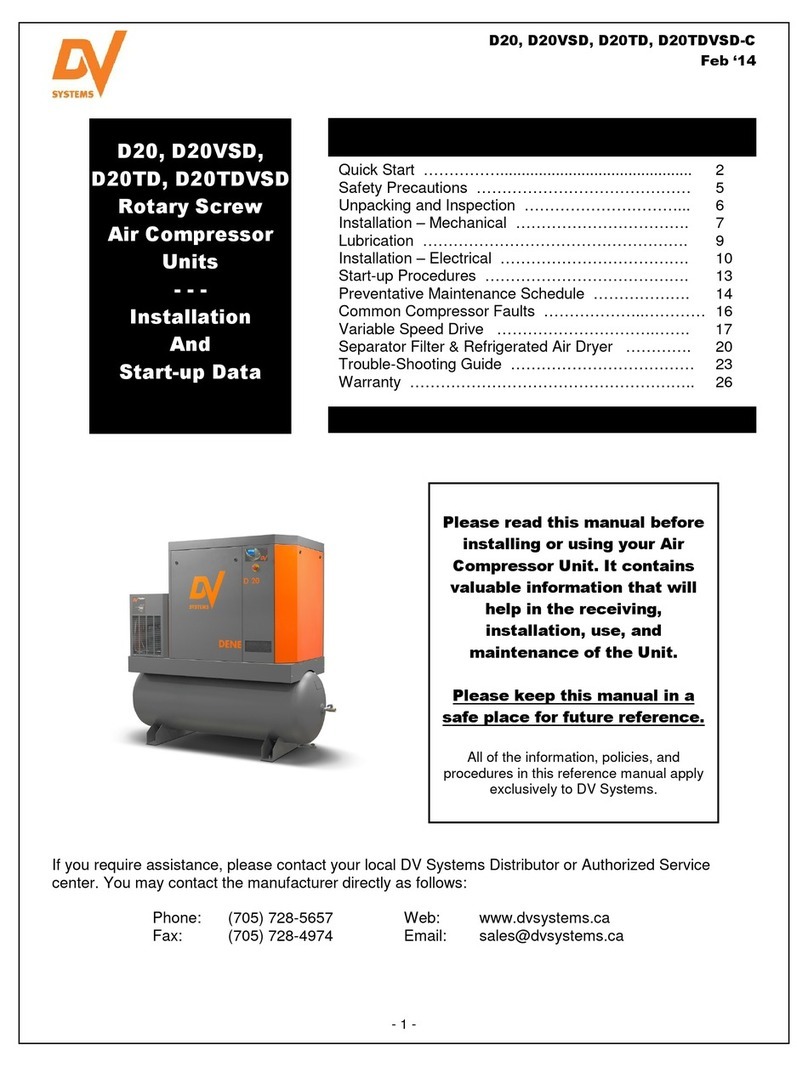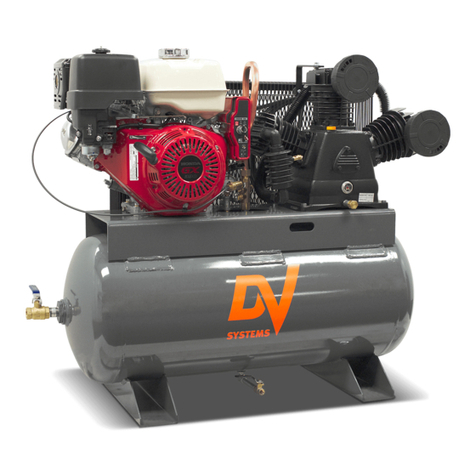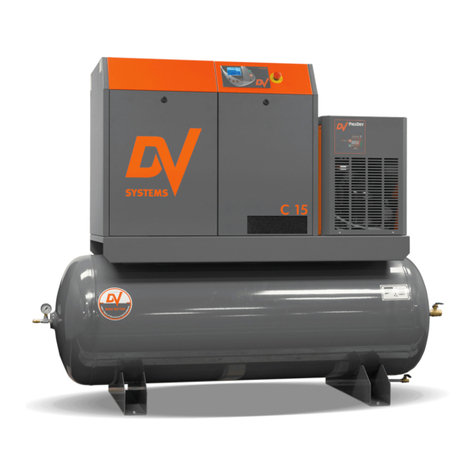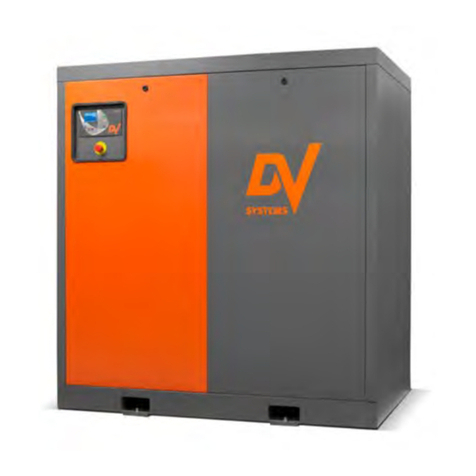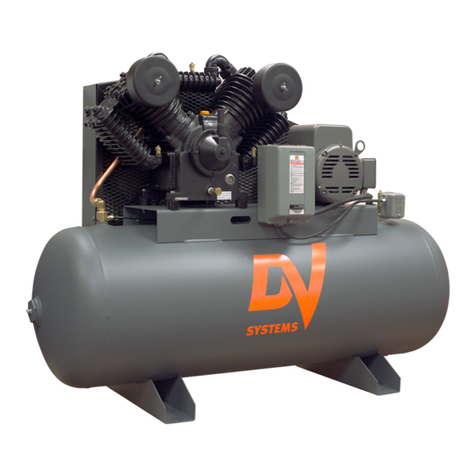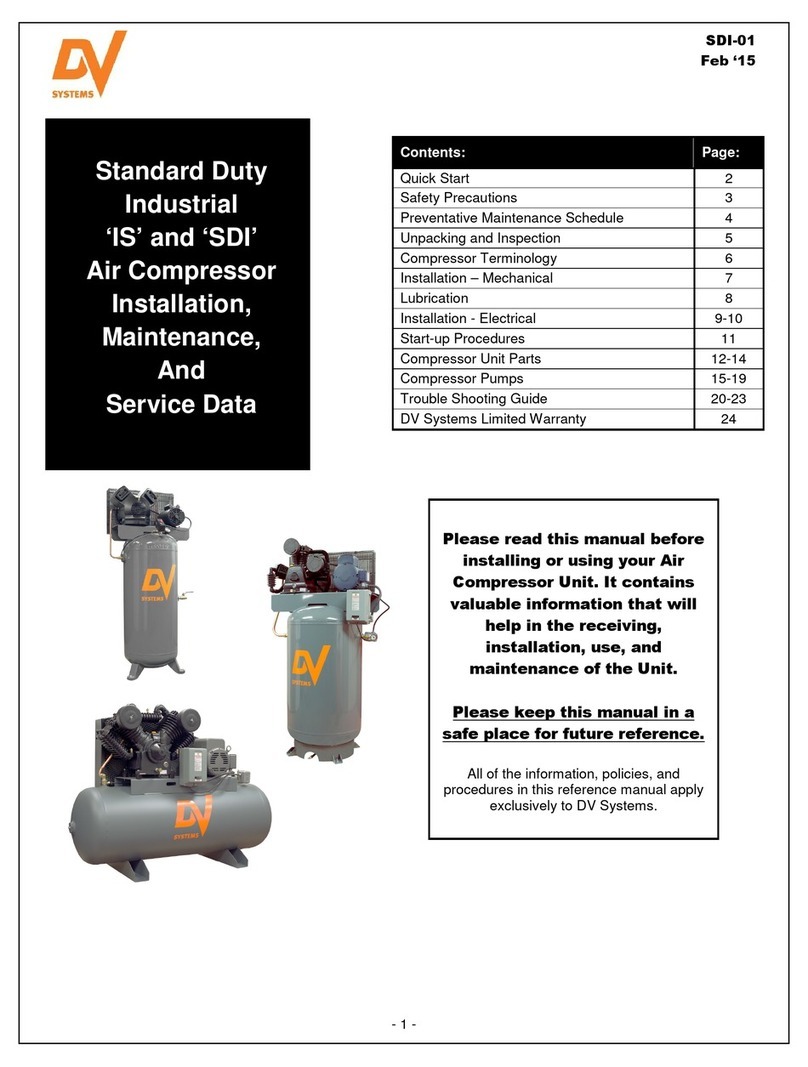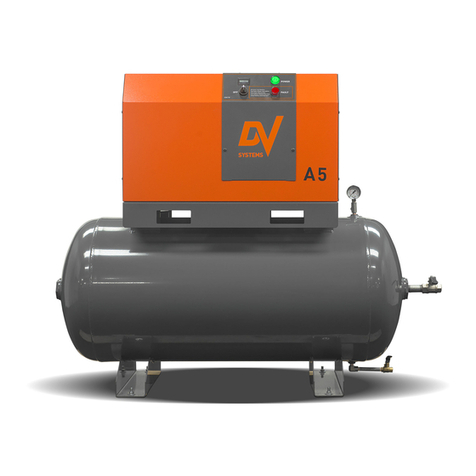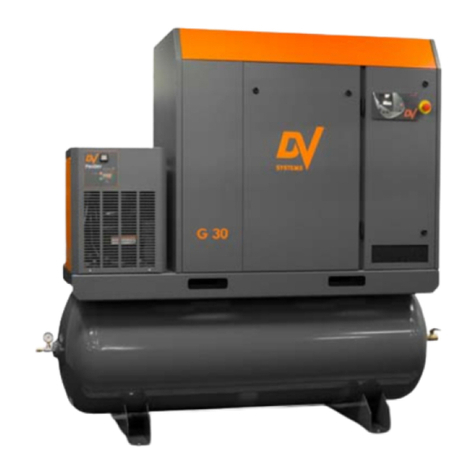
G2030-II-C
Mar ‘17
- 10 -
Lubrication
Initial Start-up.
Each Compressor Unit built is extensively tested at
the factory before shipment. The Unit is shipped with
the original oil in it as used for testing purposes.
Check the Oil level and for any Oil leaks on a daily
basis. This must be done when the Unit is off. Top up
the Oil level on a monthly basis.
Use only DV Systems ‘DEV-3000’ Synthetic Oil. Also,
do not mix the ‘DEV-3000’ with any other lubricant.
Subsequent Oil Changes.
Drain the existing oil from the Unit. (Please be
advised that the Unit cannot be drained fully of oil, as
some oil may remain in various components ie
Cooler, Tubing, etc.)
Fill the Oil Reservoir to the Metal Band on the
External Oil Level Gauge as shown below. Do not
under or overfill. See drawing below.
Use only DV Systems ‘DEV-3000’ Synthetic Oil,
available in both 1 US gallon (3.8 litre) jugs or 5 US
gallon (5 x 3.8 litre) pails. Any remaining oil may be
used for ‘top-ups’.‘
The ‘MK-G20-30-1’ Maintenance Kit includes:
(1) 5 US Gallon Oil (‘DEV-3000’)
(2) Oil Filter (’DSC-624’)
(1) Air/Oil Separator Filter (’DSC-001148’)
(2) Air Filter (’DSC-001961’)
(1) In Line Filter (‘DSC-612)
The ‘MK-G20-30-1’ Kit is appropriate for Units of
serial number ‘37162’ and higher. Use ‘MK-G20-30’
Kit for Units of serial number ‘37135’ and lower.
Do not attempt to operate the Unit without
first checking whether there is oil in the Oil
Reservoir. Add oil as required. Serious
damage may result from use, however
limited, without oil.
Use of improper oil may negatively affect
Compressor performance or shorten Unit life.
Resulting problems are not covered by the
DV Systems Inc. Air Compressor Warranty.
Condensation (water) may form in the Oil
Reservoir with the oil. If this occurs, as the
water will tend to settle on the bottom of the
Reservoir, drain the water from the Reservoir
until you notice oil draining. Top up the
Reservoir with new oil using only the DV
Systems ‘DEV-3000’ oil.
When running,
oil level will be
closer to bottom
Elbow
Oil Fill Port
Oil Drain Valve & Tube
Oil Filter DSC-624
Correct
Oil Level
Air/Oil Separator Filter
DSC-001148
